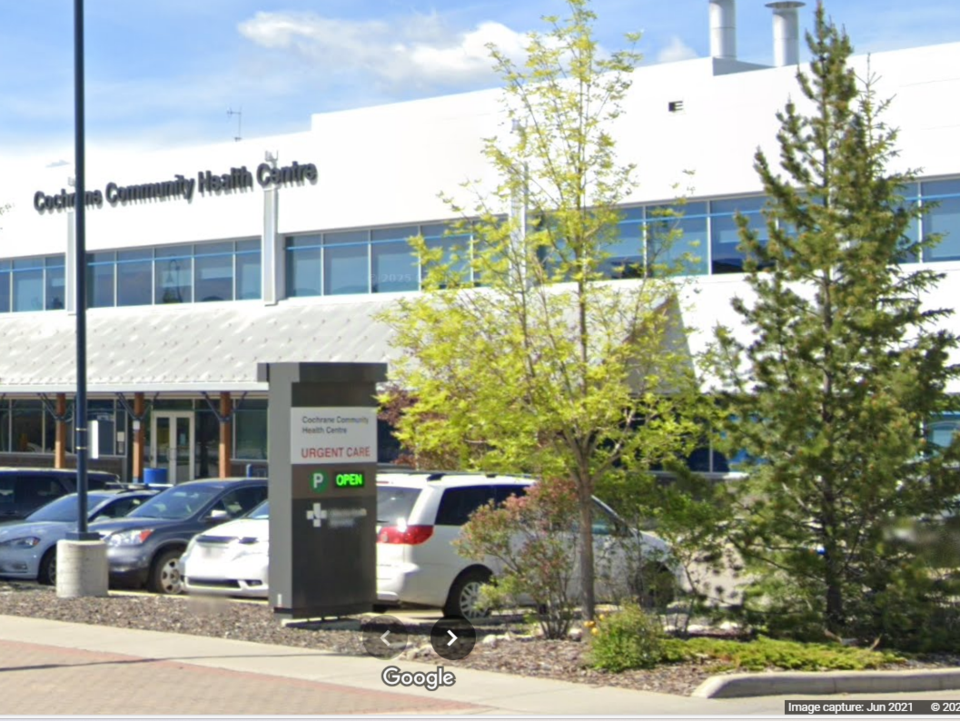A quick look at estimated emergency department wait times on July 10 at 11:05 a.m. showed Cochrane Urgent Care with the shortest wait in the Calgary and Area region, at just 45 minutes. By 11:25 a.m., that number had dropped to a mere 30 minutes, making it the only facility in the region reporting sub-hour wait times.
This drop in wait times aligns with comments made by Barb Shellian, Director of Rural Health for Alberta Health Services (AHS), Calgary Zone, during a June 2 Cochrane council Committee of the Whole meeting.
“Initially we were having a hard time managing the published wait times because a lot of people would be coming in, and we were having a hard time getting everyone through before closing at 10:00 p.m.,” said Shellian. “The funding for the additional nursing staff has really made a difference.”
Cochrane Urgent Care has received a recent staffing boost, adding four full-time nursing positions and increasing physician coverage. These changes have led to marked improvements in patient flow and access. AHS confirmed that extended hours are not currently under consideration.
“At this time, there are no plans for expanded services or hours,” AHS stated. “The site has recently added staff to improve access and reduce wait times.”
Shellian also referenced a public education initiative in development with the team behind Alberta’s wait time reporting website.
“We’ve been working on a project ... about when to go to emergency versus urgent care," she said. "There is going to be more public information on that website."
AHS echoes the importance of understanding where to go for care. They clarified that urgent care is designed for non-life-threatening concerns that still require timely attention, such as minor injuries, infections, rashes, and mild asthma symptoms. Emergency departments should be reserved for serious, life-threatening conditions like chest pain, stroke symptoms, or major trauma.
Patients uncertain about which service to use are encouraged to call Health Link (811) for guidance, which may include referrals to Primary Care Networks (PCNs) or other appropriate providers.
“We need to educate the public on what this facility can and cannot handle,” said Brian Winter, president of the Cochrane Community Health Foundation. “There are going to be cases we simply cannot manage at urgent care.”
While patients may return for follow-ups, AHS reminds that urgent care is not meant for ongoing treatment. Electronic health records and secure messaging help keep family doctors informed and ensure continuity of care.
According to AHS, Cochrane Urgent Care patients wait 60 to 90 minutes from triage to physician assessment, with an average total visit of about two hours. These wait times, now reduced thanks to staffing increases, continue to be monitored.
Though 24/7 operations are not on the table right now, the Cochrane Community Health Foundation isn’t backing down from advocating for growth. Winter revealed a fall capital campaign will be launched focused on acquiring hospital equipment-- a move he hopes will bolster the clinic’s case for expanded services in the future.
“We feel that if we purchase this equipment through a capital campaign, it might increase the volume of people that need to use it,” Winter said. “Rather than hammering at the door for 24/7 service, we’re focusing on our main mandate—this equipment could become the advocacy tool we need.”
While the foundation continues its advocacy, public understanding remains a vital tool in maintaining low wait times. Accessing the most appropriate level of care helps keep urgent care services available for those who truly need them.
While the educational piece Shellian mentioned AHS is working on is still in development, a similar resource can be accessed by patients at this link: https://www.albertahealthservices.ca/options/Page11972.aspx
Cochrane Urgent Care is located at 60 Grande Boulevard. For more information on services and wait times, visit "AHS Facility Page – Cochrane Community Health Centre" or the "Estimated emergency department wait times."




